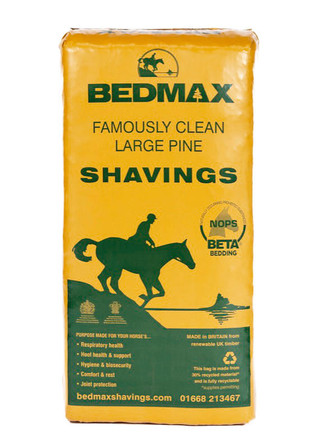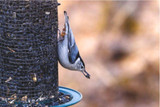Should You Provide Nesting Materials For Birds?
Nesting material for birds. In recent years there has been a trend for people to leave out nesting materials for birds to use in the springtime. We all love helping our feathered friends by feeding them and providing nest boxes, but do we need to provide them with nesting materials?
The short answer is not really – birds are perfectly capable of building nests on their own. Some birds are even exceptionally talented in this area. But it doesn’t hurt to help, right?
In this blog, we will look at how birds build their nests, and what we can do to make things easier for them.

How Do Birds Build Nests?
Most birds in the UK build new nests each year – although they may return to previously used sites, nests will need to be reconstructed. For each species of bird, this process is different.
Some birds are not particularly ‘houseproud’ and will build large messy nests resembling nothing more than a pile of sticks in a tree. Magpie nests can look quite messy but the messiest of all is the Rook. Rook nests look almost accidental as they often don’t have any structure to them and are made by the birds dropping sticks into trees until the base of a nest is formed.
For other birds, their nests can be compared to a work of art and many hours are spent labouring over these small wonders. Long Tailed Tits build amazing nests resembling small pouches that might leave you wondering how they possibly made such a neat structure.
Other common garden birds such as Blackbirds and Robins build nests resembling what most of us would recognise as a common nest shape – a cup. These small and neat nests are usually built in bushes or hedges and can take from a few days to weeks to complete.
Most birds build their nests in Spring, between March and April. Nests are usually compromised of a variety of materials but will nearly always include twigs, moss, and other vegetation, as well as feathers on the inside to provide insulation.
Many birds use a weaving technique to build their nests, carefully threading in new items with their beaks such as a stick or a bit of grass. This weaving technique ensures the structure is sturdy and won’t become dislodged by the wind.
However, some birds have adapted to living around humans and now take advantage of cosy man-made nest boxes or even buildings such as roof spaces. Even when birds use these more unconventional sites, they will still line their nest with materials to ensure eggs are provided with enough warmth to develop.
Other birds have always been opportunistic when it comes to finding a place to lay their eggs – owls, for example, are famous for using existing holes in tree trunks.
What Materials Do Birds Use To Build Nests?
As mentioned, birds will use a variety of materials to build their nests and some species will favour different materials and have their individual preferences.
Commonly used materials include stick or twigs, moss and grass, leaves, mud, feathers, fur from animals or sheep wool and…spider webs.

Yes, you read that right! Many types of bird will use bits of spider web as glue in their nests to join pieces together and ensure the nest is weatherproof. Although many people fear spiders this just demonstrates the importance of spiders in the ecosystem. Some birds use this natural nesting material more than others – the Long-Tailed Tit, for example, would not be able to build its miraculous pouch style nest without large quantities of spider web!
Nest Boxes
Although birds are very secretive when it comes to nest building, they will often utilise nest boxes provided by humans. Providing the boxes are positioned in a safe place where predators won’t be able to access them. These can be positioned in your garden and have the added benefit of being able to watch birds during the breeding season. If you keep an eye on a nest box you may be able to see (and hear!) the entire process of nesting, chicks being fed, and finally, fledging their nest.
Should You Provide Nesting Materials?
As mentioned, providing nesting materials for birds isn’t vital as most of the ingredients used in a bird’s nest are commonly found outdoors.
Some people provide pet fur for birds to take to their nests, but you should only do this if you have not treated your dog or cat with any flea or other parasite treatments. It is believed these medications may be harmful to fledgelings as they are likely to linger on the surface of the fur.
If you want to leave anything out for the birds to nest with, ensure it is a natural fibre and has not been chemically treated. Leaving out human hair isn’t a good idea either – long hairs are harder for birds to handle and fledgelings may become tangled in them.
There are things you can do to make nesting easier for birds though and that is by making sure their natural nesting materials are readily available.
For example, leave a pile of grass clippings out instead of composting them. Instead of rushing to clear up trimmed leaves from bushes, leave them on the ground for a little while or if you rake moss from your lawn, leave it to one side for birds to collect.
You could also keep a patch of your garden a little muddy – at the side of a pond would be ideal. This makes it easier to collect for birds using mud in the construction of their nests such as blackbirds, and if you’re lucky – House Martins.
Another way you can help birds in springtime is by providing bird food regularly. At this time of year, birds are extremely busy looking for a mate or constructing nests. This all takes a lot of energy so food is important when it comes to birds keeping themselves healthy and raising their soon to be born chicks.
Explore Popular Articles
-
Top 11 Yellow Birds in Britain and the UK to Attract in Your Garden
15th Dec 2025Yellow birds bring a splash of colour and cheer to any garden. Observing these birds can be both rel
-
Should You Feed Birds Every Day? A Complete Guide on Feeding Birds
15th Dec 2025At Kennedy Wild Bird Food, we believe that understanding how to care for garden birds is as importan
-
How Sunflower Seeds Can Improve Your Bird's Health
14th Jun 2024Birds are quite attracted towards sunflower seeds, but have you ever wondered about sunflower seeds'














